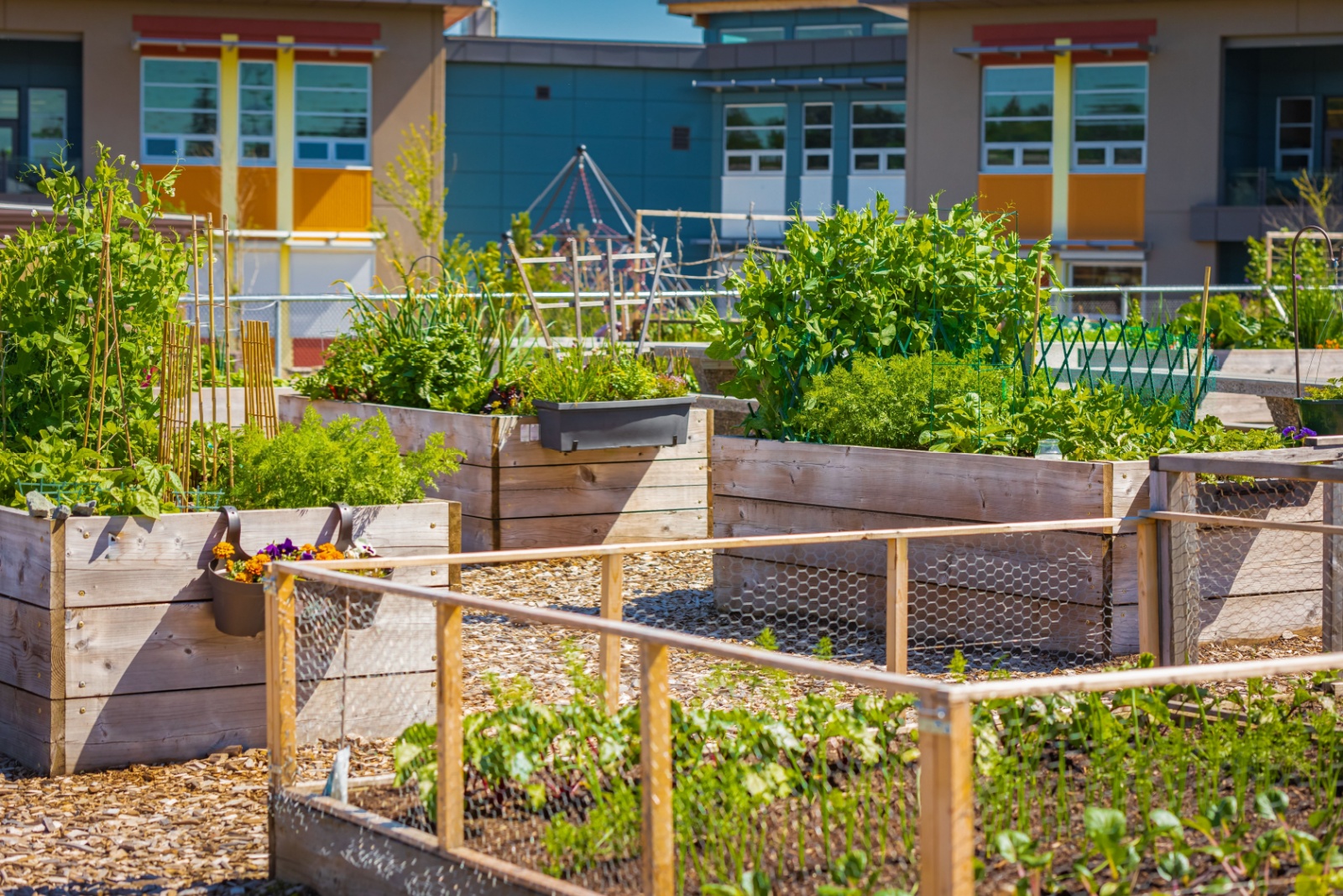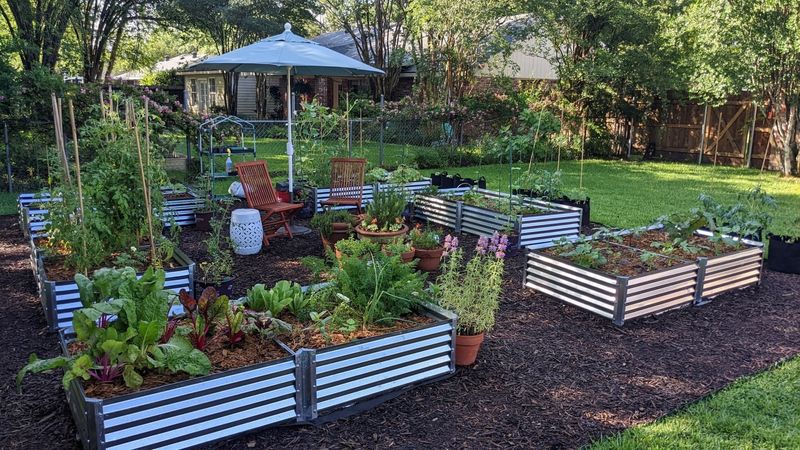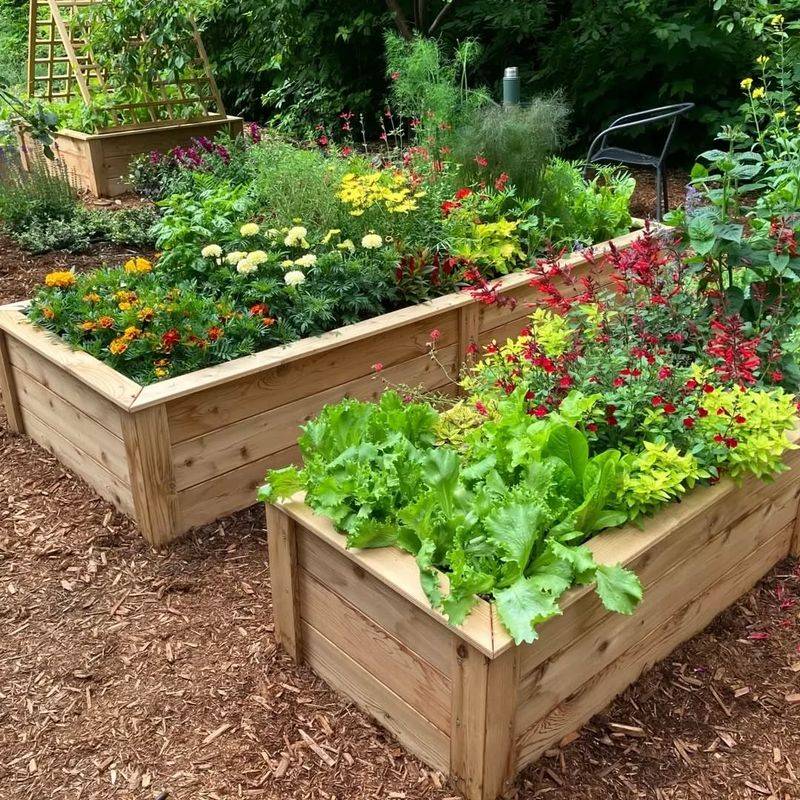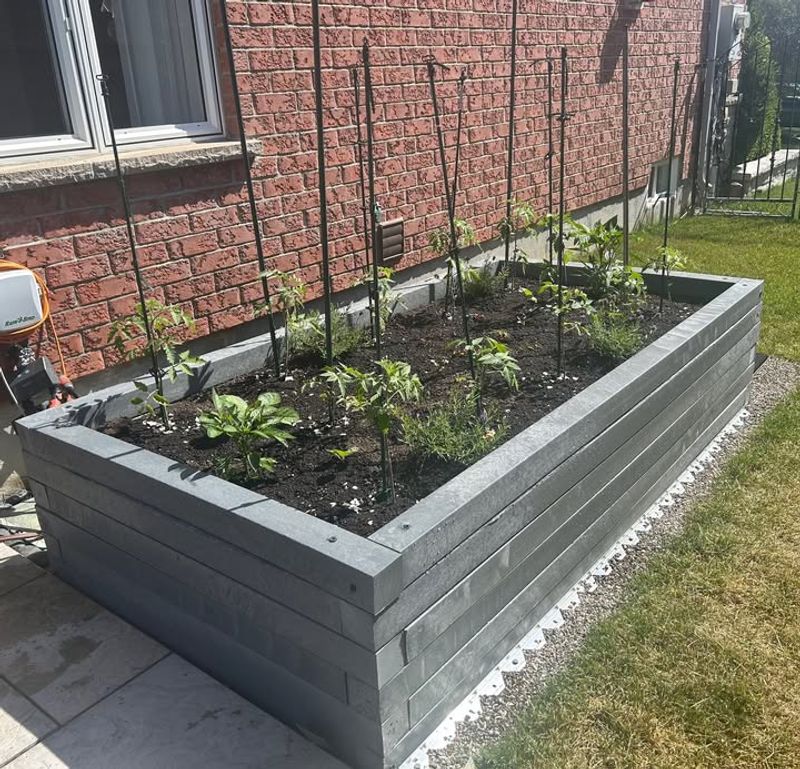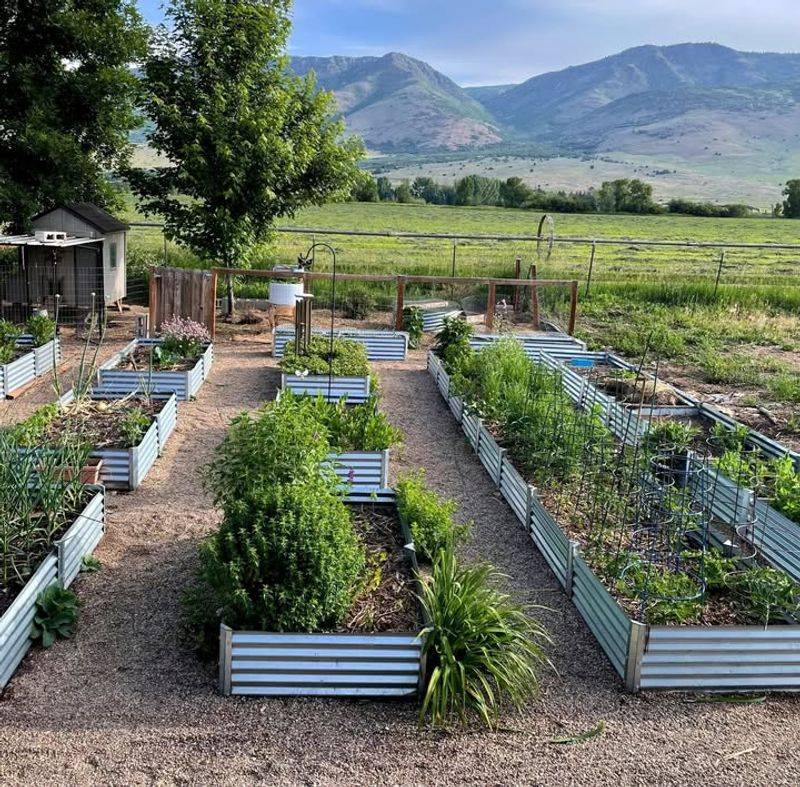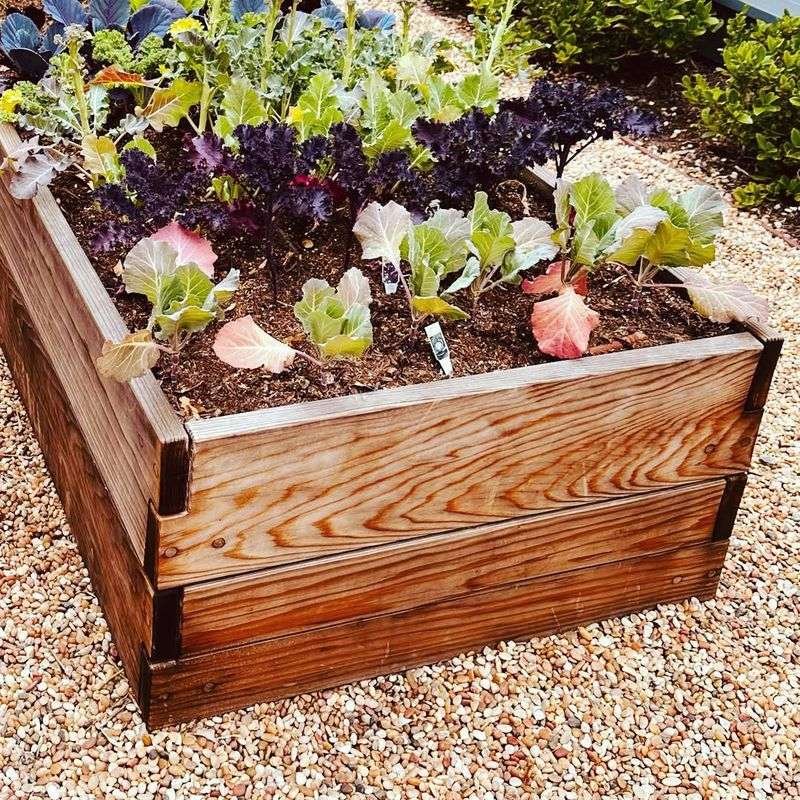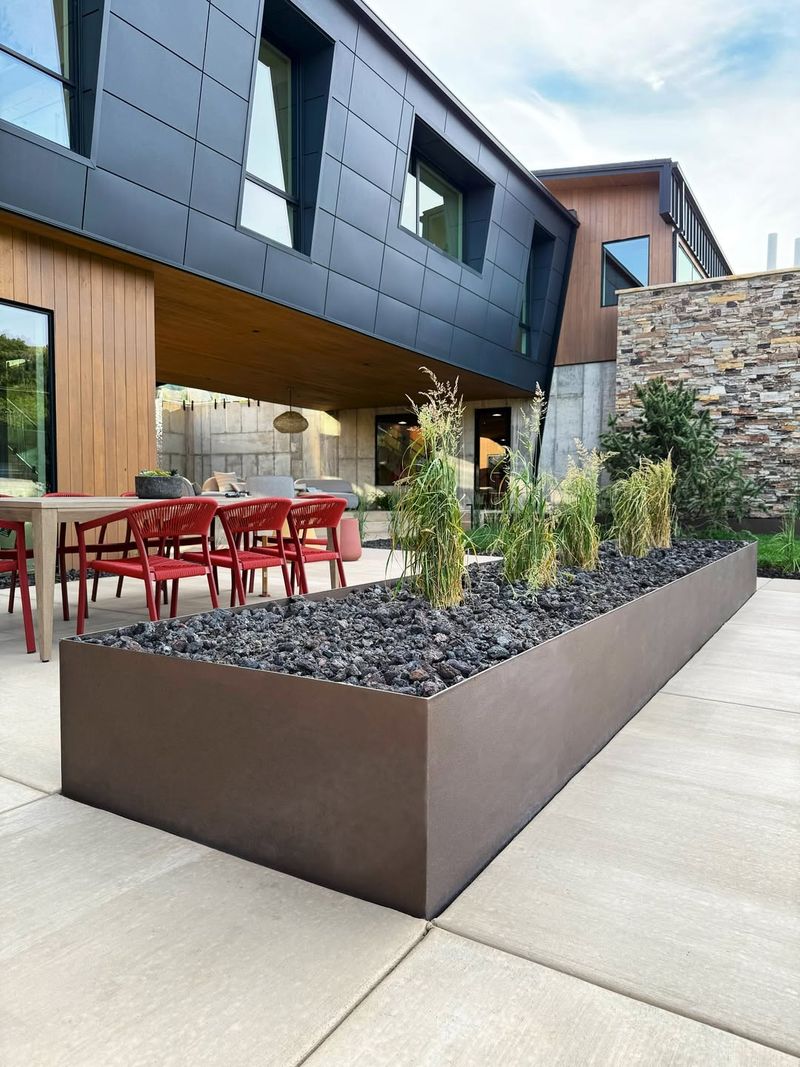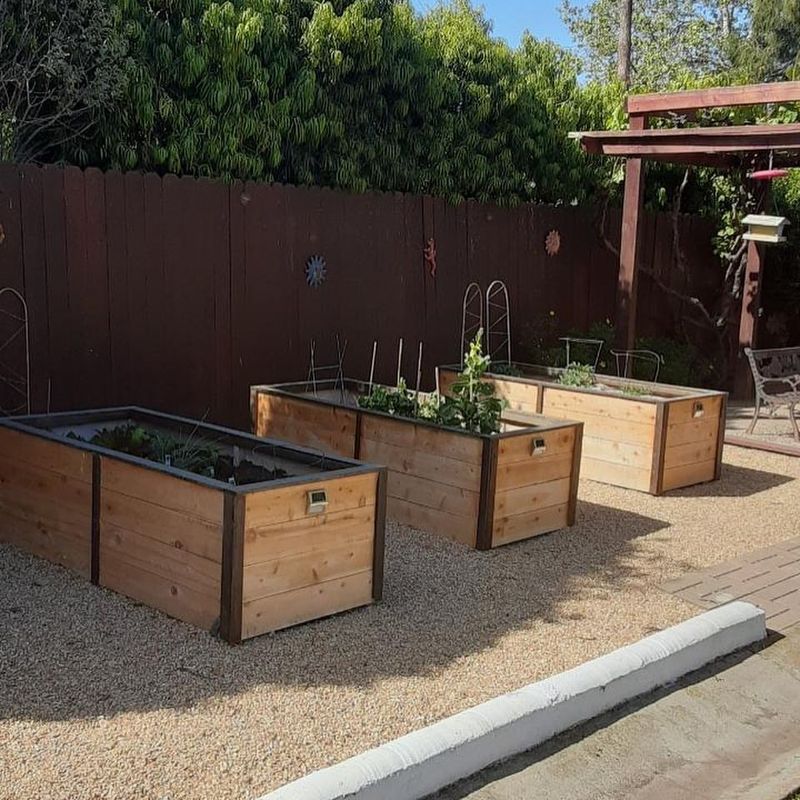Texas weather can be brutal on garden structures. From scorching summer heat to unexpected freezes, your raised beds need to be tough enough to handle it all.
Choosing the right material and design means you won’t have to replace your beds every few years, saving you time and money while keeping your garden thriving.
1. Galvanized Steel Raised Beds
Metal that has been treated with zinc coating creates a barrier against rust and corrosion. Even during humid Texas summers, galvanized steel stands strong without breaking down.
The material reflects heat instead of absorbing it, which helps protect plant roots from getting too hot. Most models come with reinforced corners that prevent warping when the soil expands and contracts with temperature changes.
Expect these beds to last 20 years or more with minimal maintenance required.
2. Cedar Wood Raised Beds
Natural oils within cedar wood act as built-in preservatives that repel insects and resist decay. Unlike treated lumber, cedar won’t leach chemicals into your soil, making it perfect for growing vegetables and herbs.
The wood weathers beautifully to a silver-gray color while maintaining its structural integrity through years of Texas sun and rain. Thicker boards, usually two inches, hold up better than thinner options.
You can expect a solid decade of use from quality cedar beds.
3. Composite Material Raised Beds
Recycled plastic and wood fibers combine to create boards that look like wood but last much longer. Composite materials won’t splinter, crack, or rot, even after years of exposure to harsh conditions.
They require zero painting or sealing, which means less work for you. The material stays cooler than metal during summer heat waves, and it won’t expand or contract as dramatically as pure wood.
Many manufacturers offer warranties of 25 years or more on composite beds.
4. Cinder Block Raised Beds
Concrete blocks stacked together create incredibly sturdy garden borders that laugh in the face of Texas storms. Their weight keeps them anchored without needing additional hardware or stakes.
The hollow centers of cinder blocks can be filled with soil for growing herbs or flowers, adding extra growing space. They absorb heat during the day and release it at night, which can extend your growing season slightly.
Best of all, cinder blocks are inexpensive and virtually indestructible for decades of gardening.
5. Corrugated Metal Raised Beds
Wavy metal sheets create a vintage farmhouse look while providing exceptional durability. The corrugated design adds strength that prevents bending and buckling under the weight of wet soil.
Unlike flat metal, the ridged pattern allows for better air circulation around the exterior, which helps prevent moisture buildup. Most corrugated beds come with protective coatings that resist rust for many years.
Their lightweight construction makes them easy to move if you need to rearrange your garden layout later on.
6. Stone Or Rock Raised Beds
Stacked limestone, flagstone, or river rocks create raised beds that blend naturally with Texas landscapes. Stone withstands every weather extreme without any degradation whatsoever.
The thermal mass of rocks helps regulate soil temperature, keeping roots cooler in summer and warmer during cold snaps. Building with stone requires more initial effort, but the result is a permanent garden feature that adds property value.
Your great-grandchildren could still be using the same stone beds you build today.
7. Redwood Raised Beds
Similar to cedar, redwood contains natural tannins that make it resistant to rot, insects, and decay. The rich reddish-brown color adds warmth and beauty to any garden space.
Redwood is softer and easier to cut than many woods, which makes customizing bed sizes simpler for DIY projects. It ages gracefully, developing a distinguished patina while remaining structurally sound through temperature swings and storms.
Quality redwood beds typically provide 15 to 20 years of reliable service with proper drainage underneath.
8. Powder-Coated Aluminum Raised Beds
Aluminum naturally resists rust, and adding a powder-coated finish provides extra protection plus color options. The lightweight metal makes these beds easy to assemble and reposition as needed.
Unlike steel, aluminum won’t rust even if the coating gets scratched or chipped over time. The material conducts heat less than other metals, so it stays cooler to the touch during scorching Texas afternoons.
Aluminum beds offer decades of maintenance-free use while keeping a clean, modern appearance throughout their lifespan.
9. Pressure-Treated Lumber Raised Beds
Wood treated with preservatives resists rot and insect damage far better than untreated lumber. Modern pressure-treated wood uses safer chemicals than older versions, though some gardeners still prefer using liners for edible crops.
The treatment penetrates deep into the wood fibers, protecting from the inside out against moisture and decay. Pressure-treated beds cost less than cedar or redwood while still providing 10 to 15 years of dependable use.
Regular inspections help catch any issues early before they become serious problems.

